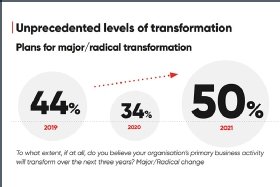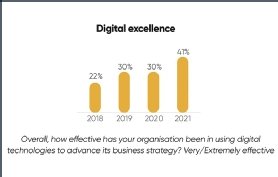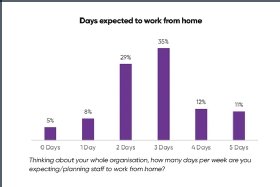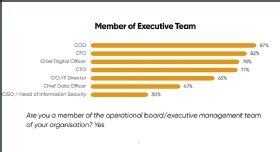
Bits and Splits - stock.adobe.co
Technology spending reaches record levels, fuelling jobs boom
Spending on IT has reached its highest levels for a decade but a shortage of skilled IT professionals could dampen growth
The number of organisations planning to boost their investments in technology and hire new staff has reached record levels, a survey of technology leaders has revealed.
Planned spending on information technology reached its highest levels for a decade as companies invested in business transformation projects.
The trend continues an acceleration in spending on technology that began during the pandemic as companies were forced to adjust to new ways of working.
Company boards have identified investment in technology to develop new products and services as a top priority, according to the Harvey Nash Group survey of over 2,000 digital leaders in nearly 90 countries.
But investment plans could be undermined by staff shortages as demand for technology professionals reaches new highs, according to Harvey Nash's Digital leadership report. Technology leaders surveyed reported difficulties hiring cyber security specialists, data analysts, technical architects and developers.
“With businesses planning record levels of digital investment, we could be on the verge of a ‘second renaissance’ for technology,” said Bev White, CEO of Harvey Nash Group. “Organisations are looking to push their digital transformations further and faster than ever before.”
But she warned that companies’ plans were under threat from an acute shortage of qualified staff as demand reaches record levels.
Surge in tech spending
Last year saw the biggest recorded surge in spending on technology in more than a decade, according to the Harvey Nash report, as companies invested in technology to help them manage the pandemic.

Rather than cutting back their spending, companies have now pivoted from providing the technology needed for employees to work remotely to using technology to transform their business.
Broadcast and media organisations, technology companies, banks and retailers are among the sectors planning to invest most heavily in new products and services.
Many organisations learned to be more nimble and agile with their technology during the pandemic and are now using those skills to engage with their customers more effectively, the report stated.
Innovation on the agenda
The pandemic also placed innovation high on the agenda, said White, as organisations developed new ways to reach customers in lockdowns.
In the hospitality business, for example, before the pandemic, restaurants offered customers one choice – the ability to book a table. Now customers can opt to have the restaurant deliver a full meal to their door, or a partially prepared meal that they can cook themselves.
“Being close to the customer and customer needs has become more important,” said White.

“With businesses planning record levels of digital investment, we could be on the verge of a ‘second renaissance’ for technology. Organisations are looking to push their digital transformations further and faster than ever before”
Bev White, Harvey Nash Group
Organisations have also continued to move their technology to the cloud to ensure they can react to peaks in customer demand. “The minute someone accesses your service, you need to be able to respond. They can’t afford to be kept waiting,” she said.
Cloud computing saw a big jump from 2020, when 69% of digital leaders reported some kind of presence in the cloud, to 90% today. Around 60% of digital leaders said their companies had implemented big data or data analytics projects.
The number of organisations investing in robotic process automation (RPA) has also grown as companies seek to improve the way they interact with their customers through the internet. “Making services smooth, repeatable and reliable is really important,” said White.
Around 30% of organisations are using the internet of things (IoT) to develop services, which can range from fitness gadgets to devices that monitor medical conditions.
Nascent technologies such as quantum computing have also seen rising investment, with around 3% of organisations reporting that they have implemented the technology.
“Many organisations may be using the latest advances in technology without realising, because they are embedded in cloud services,” said White.
Top performing organisations made better use of data to develop products and services and to generate income, according to the survey. They were more agile in pivoting and scaling their products and services to meet the demands of customers.

And large organisations were better at exploiting data than smaller organisations. Some 38% of digital leaders in organisations with tech budgets of $250m or more rated themselves as either “very effective” or “extremely effective” at using data to create revenue. That compared to the global average of 23% of digital leaders in smaller organisations.
Battle for skills
At the same time, organisations are increasingly struggling to find the skilled staff they need. More than two-thirds of digital leaders said they were unable to keep pace with changes they were facing due to shortages of skilled technology professionals.
Cyber security is a particular concern for technology leaders, with the UK facing an estimated shortage of 10,000 cyber security professionals annually.
Another survey found that one in seven people are considering moving out of cyber security because of the pressure they face at work. “The stress and strains are starting to hurt,” said White.
Digital leaders reported shortages of data analysts, people with big data skills and technical architects. Demand for developers has also increased significantly as companies develop products and services underpinned by technology.
As a result, more employers are planning to offer apprenticeships to young people starting out on their career path and older people who want to retrain. Just over half of digital leaders said they would increase cross-training of staff in other parts of the business to bring them into technology. Businesses are also turning to specialist consultancies and outsourcing to fill gaps in the expertise of their workforce.
Hybrid working pros and cons
Many employers have been able to widen the pool of recruits they attract by offering potential employees the ability to work from home, in the office or a mix of the two.

Hybrid working has boosted productivity and helped staff improve their work-life balance, but it has also created other problems, with six in 10 digital leaders reporting that home working has affected the mental health of their teams.
White said it was becoming increasingly important for technology leaders to look after the well-being of their staff. “Mental well-being is really important, engagement is really important, making sure you are regularly talking to teams is important,” she said.
Managers need to pay attention to their employees, she said, because “not everyone wants to say, ‘I am concerned’, ‘I am having dark thoughts’”.
The role of digital leaders
The pandemic led to an acceleration of technology projects and put digital leaders “front and centre” in their organisations as companies scrambled to get to grips with remote working, changed customer behaviour and shifting supply chains during lockdown.
That led to a 5% rise in IT budgets last year, which is set to continue over the next five years.
More than half of digital leaders said their priority was on new developments rather than making the most of the systems they already have.

Responsibility for technology has expanded beyond IT departments as more companies appoint chief digital officers (CDOs) and chief technology officers (CTOs) to their executive management teams.
Chief operating officers, chief marketing officers, chief technology officers and chief digital officers all now play a role in developing digital strategy. They have increasingly taken on the roles of developing better ways to reach customers, creating new products and services, and gaining business insights from data.
Reflecting on this trend, the proportion of chief information officers (CIOs) on the board fell from 71% in 2017 to 66% in 2020. CIOs are more focused on security, managing legacy IT systems and implementing software as a service across the enterprise.
“The role of the CIO is much more about keeping everything connected and making sure there is a cohesive plan,” said White.

The role of digital leader is more fluid than it used to be, as decisions are made by those who are best placed to make them. The proportion of digital leaders who report more than a quarter of technology spending being controlled outside the IT department rose from 20% in 2019 to 26% in 2021.
“As more services are moved to the cloud and managed by other providers, the role of a CIO is more about understanding the domain, being a networker and a curator, keeping the board informed and being an influencer,” said White.
Keeping hold of valued staff
Companies are having to work harder to retain their staff as competition for skills intensifies. Over 80% said the pandemic had led staff to reconsider their life priorities and made it more difficult to retain staff.
“There is wage inflation and there are large sums of money on the table to attract people to other jobs,” said White.
Just under four in 10 leaders were confident they could hold on to their key employees for as long as they wish. Younger workers are increasingly looking to work for organisations that offer a clear sense of purpose. Pharmaceutical and charities are most likely to be able to keep their staff, and telecommunications companies the least.
“Companies need to differentiate themselves by listening to employees and making sure they feel good about working in their organisations,” said White.
Leadership priorities
Technology leaders identified cyber security as their most important priority. The pandemic increased the “attack surface” of organisations as more people worked from home.
After that, digital leaders are focusing on using digital technology to transform their organisations and to support innovation. The most innovative organisations focused on creating the right environment for innovation to happen, according to the report. They have an agile technology platform that can scale and change to suit business demands.
Digital leaders said the most important ways to increase innovation were to increase pace and urgency, followed by gaining a deeper understanding of customers and winning support from the board. That was more important than gaining more budget, they said.
Hybrid working set to boost number of women in top tech roles
The proportion of women in leadership roles in technology is increasing year by year but still remains “disappointingly low”.
The proportion of women digital leaders grew from 8% in 2015 to 12% in 2021, a survey of 2,000 technology leaders in nearly 90 countries revealed.
Bev White, CEO of the Harvey Nash Group, which conducted the survey, said that although more women were going into technology jobs, it was hard for them to reach a senior level.
“As people progress over time, and have different demands on their time, women still remain the primary care givers, and that makes it harder to advance your career,” she said.
That is likely to change as more companies move to a hybrid model of working where staff can work in the office or from home. From a personal perspective, White said home working allows her to take her children to school and still hit her work goals.
“This means women are more likely to get a promotion and more likely to stay in the organisation,” she said.
The average proportion of women on tech teams has reached just under a quarter, providing opportunities to develop more women leaders in future.
“We are working with organisations and governments to show people female role models in technology. We are saying to women you can have a fantastic career coming into the technology industry,” she said.










